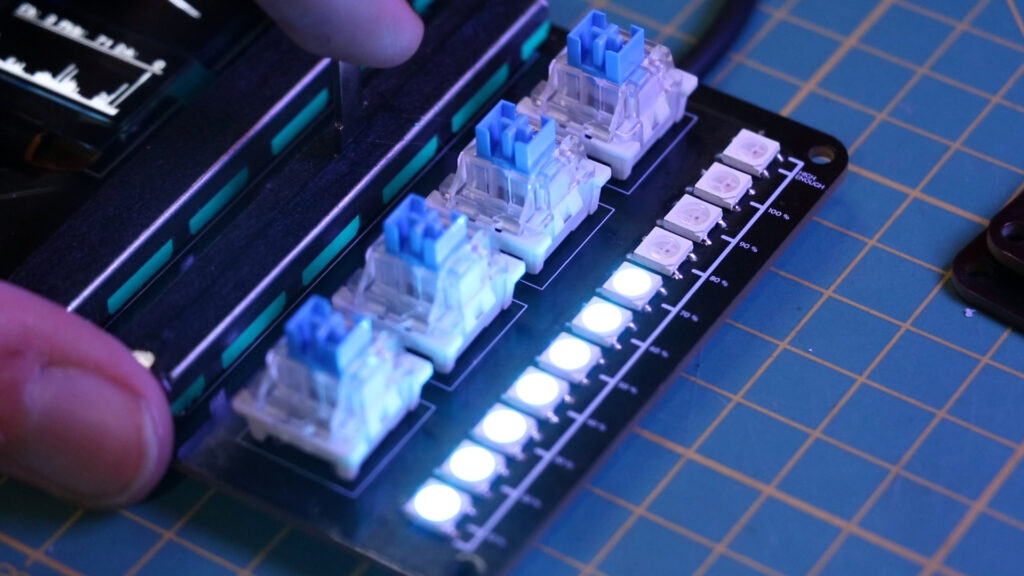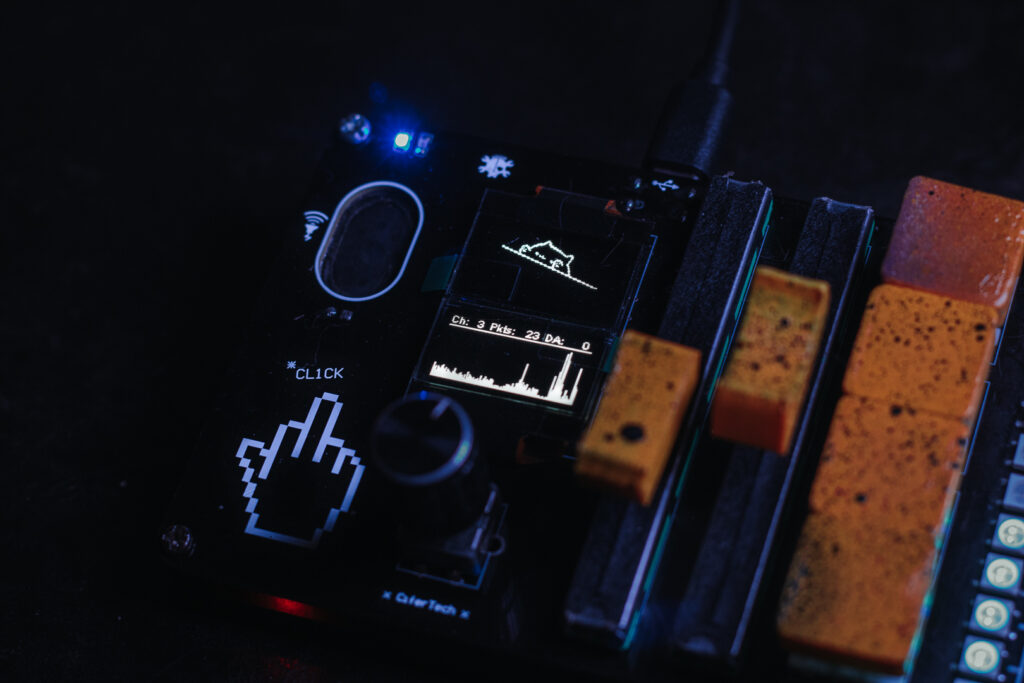![]() About the Project
About the Project
A macro-pad is essentially a smaller, specialized keyboard with extra programmable keys. These devices are fantastic for assigning shortcuts and macros, making it easier to perform repetitive tasks quickly. The “MicroClick” is open-source, and you can find all the necessary files, including the PCB designs and code, on my GitHub or website. Let’s dive into the details of this project, from the initial concept to the final product.
![]() Features & Components
Features & Components
The “MicroClick” macro-pad is designed with versatility and functionality in mind. Here’s a breakdown of the key features and components that make this device a must-have:
Microcontroller: ATmega32U4
The heart of the macro-pad is the ATmega32U4 microcontroller. This choice was driven by the microcontroller’s HID (Human Interface Device) capabilities, which are crucial for creating custom keyboards and input devices. The ATmega32U4 allows the macro-pad to communicate with computers and send keyboard inputs directly, making it a perfect fit for this project.
LEDs: WS2812B NeoPixel
For visual feedback, I’ve included WS2812B addressable NeoPixel LEDs. These LEDs are not only bright and colorful but also incredibly versatile. In the “MacroClick,” they are primarily used to indicate volume levels and other statuses. The LEDs are fully programmable, allowing you to customize their behavior to suit your needs.
Switches: Mechanical Keyboard Switches
The “MacroClick” features mechanical keyboard switches, specifically the blue variant. Mechanical switches are known for their durability and tactile feedback, making them ideal for frequent use. The blue switches, in particular, provide a satisfying clicky sound, which can enhance the user experience. However, the choice of switch type is entirely up to you; other types like tactile or linear switches can also be used based on personal preference.
Volume Control: Dual Linear Potentiometers
To provide precise control over system volume, I’ve included two linear potentiometers. These are commonly seen in audio mixers and provide smooth, precise adjustments. The potentiometers are also integrated with the NeoPixel LEDs, offering a visual representation of the current volume level.
Display: SSD1306 OLED
An SSD1306 OLED display adds a visual element to the macro-pad, allowing for the display of information, animations, and more. For this project, I opted for a flat cable connection rather than the typical OLED module to keep the design sleek and clean. The OLED can display various animations and information, making the macro-pad not just functional but also visually engaging.
Extras: ESP8266-07
The inclusion of an ESP8266-07 module opens up future possibilities for the “MacroClick.” This Wi-Fi-enabled microcontroller can be used for various enhancements, such as wireless control or additional data displays. In the current build, it serves as a packet monitor, but I have plans to expand its functionality in future updates.
Rotary Encoder
A rotary encoder is included for additional control options. This component can be used for navigating menus, adjusting settings, or any other rotary input needs. Its inclusion adds another layer of versatility to the macro-pad, making it even more customizable.

![]() Usage
Usage
The “MicroClick” is designed to be a versatile tool for various applications. Here are some ways you can use this macro-pad:
1. Productivity: Assign shortcuts for commonly used applications or functions. For example, you can set up keys for copy, paste, undo, and redo, making your workflow smoother and more efficient.
2. Gaming: Customize the macro-pad with game-specific commands. Whether you need quick access to inventory items, spells, or communication functions, the “MacroClick” can handle it all.
3. Streaming: If you’re a content creator or streamer, this device can be a lifesaver....
Read more » CiferTech
CiferTech About the Project
About the Project
 Features & Components
Features & Components Usage
Usage